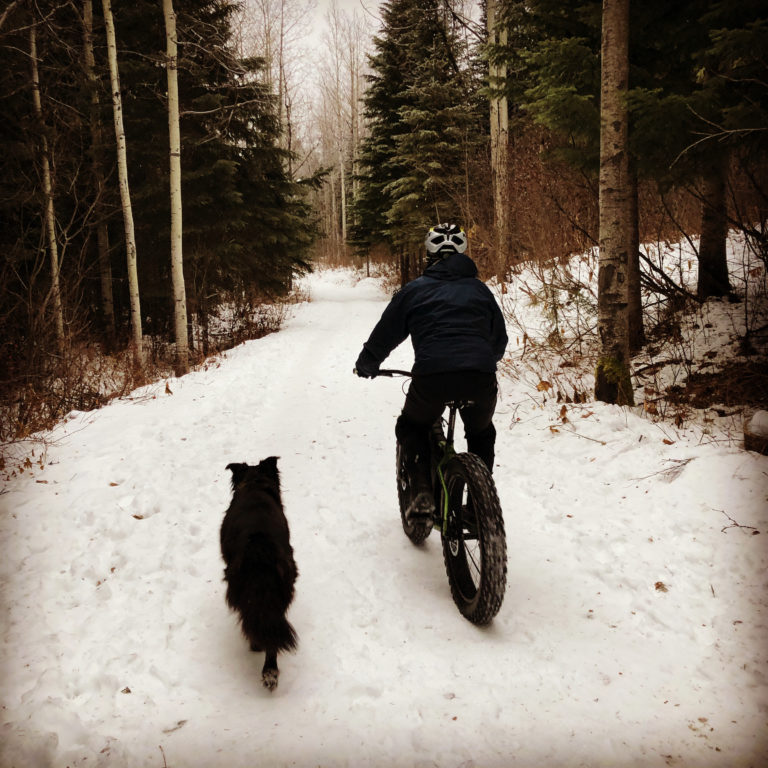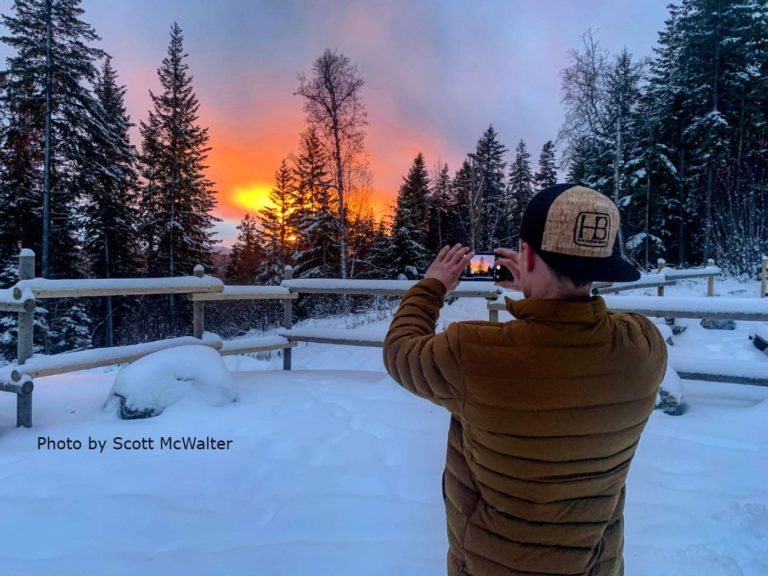- Box 225 Prince George, BC V2L 4S1
Just because there’s snow on the ground, doesn’t mean we have to stop biking! The PGCC operates a winter trail groomer, affectionately called Snowdog. The winter trail grooming program keeps us on our bikes year round.
A lot of volunteer hours go into winter trail grooming, so consider buying a membership to help support all of the efforts. Current trail conditions are shared at Fat Bikes in PG.
Everything you ever wanted to know about winter fatbiking.
Putting it simply, fat biking is a style of biking that combines the look and frame of a mountain bike with “fat” tires that are a minimum of 3.8 inches wide and can sometimes exceed 5 inches.
Fat tire bikes were originally invented for snow and sandy environment. However, the rugged and durable nature of fit bikes makes them strong enough to traverse diverse terrains. If you have some mountain bike trails, pavement, or deserts to explore, getting an affordable fat bike might be a good option to spend your money.
The PGCC regularly grooms certain trails at both Pidherny and UNBC/FFTW. Check out the Facebook page for updates.
The beauty of riding a fat bike is that you can have proper days out on terrain that you may have otherwise struggled on if you were on more conventional tires.
Layers, layers, and more layers!
The general rule of layering applies and because cycling is an aerobic sport it is important that your layers breathe (move perspiration out) effectively so you don’t get cold the minute you stop.
The fat tire revolution started over a decade ago with the introduction of bikes to winter expedition races. Check out this 2009 documentary on the origin of Fat Bikes by Carl Battreall.
Riding off road whether on dirt, rocks, sand, or snow is better with traction and the larger the volume of tire the lower the air pressure can be used which offers more grip, stability, braking, and generally more fun factor.


Do not use the trail if you leave tracks deeper than 1 inch. This applies to cyclists and hikers.
If you are leaving a rut, lower your tire pressure. Lower pressure works better (3-6psi). If you are still leaving a rut, it is too soft to ride.
Do not ride the trail if you are: